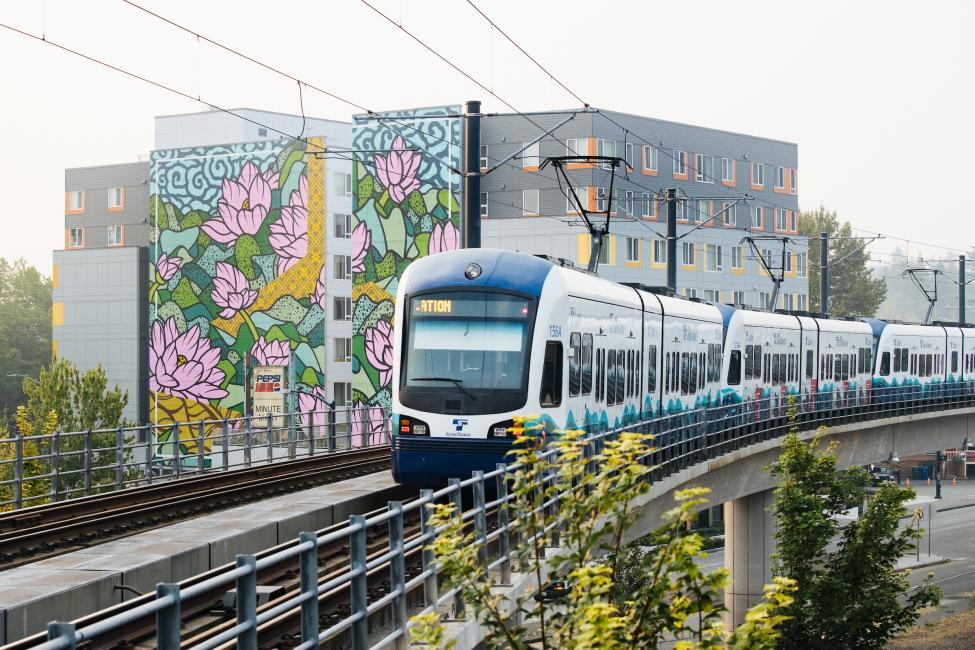Completing critical transit investments that regional voters approved in 2016 will not only enhance our mobility, but increase our communities’ economic prosperity, environmental sustainability and social equity.
Succeeding now requires us to come together to overcome lower revenue projections and higher cost estimates.
As an agency and region, we find ourselves whiplashed by a unique recession that has decimated revenue sources such as sales taxes, but without slowing our red hot property and construction markets.
Other capital programs in rapidly growing regions are also experiencing this double bind that is beyond anything we’ve seen before.
Projects already under construction, including light rail extensions to Lynnwood, Bellevue, Redmond, Federal Way and Tacoma's Hilltop neighborhood, are continuing unabated toward on schedule openings.
Of the eight major projects we currently have under construction, seven are either on or ahead of schedule and on or below budget. We are now just months away from opening Link to Northgate, and in the next four years, we will almost triple our light rail system from 22 to 62 miles.
However, through a process called realignment, the Sound Transit Board of Directors is working to determine the agency’s course of action for projects not yet in construction.
Increased cost estimates combined with reduced revenue projections result in an $11.5 billion affordability gap to complete voter-approved projects on their original schedules.
The realignment process is moving forward under the Board’s two-pronged approach. The first prong prioritizes pursuing expanded financial capacity. This includes aggressively seeking new federal and state funding and cost relief to help bridge the affordability gap.
To the extent that sufficient new resources are not secured, the Board’s second prong, as required by the ST3 Plan, will utilize the plan’s identified tools to ensure affordability under updated projections for current revenue sources.
Available tools include delaying construction of projects; modifying the phasing of projects; and/or modifying the scope of projects.
The plan the Board forges under the second prong’s conservatism will provide the base from which expanded financial capacity can improve.
The opportunity to work with the Biden administration, which has emphasized the importance of transit infrastructure, is an optimistic backdrop for the Board’s work ahead. However, a determined pursuit of new funding can’t eclipse the obligation to exercise fiscal responsibility.
It is critical we advance the realignment process now. The ballot measure approved by voters requires this process when we know the program is not affordable. And the revenue challenge in combination with the growth in cost estimates makes it very clear that it isn’t affordable.
We owe a transparent and honest reading on what can be accomplished in what timeframe to the voters, taxpayers and communities that have waited so long for high-capacity transit.
We cannot wait until we can no longer make payments for capital projects or operations to start making decisions. If you know you are going to bounce checks by the third week of the month, you don’t write the same checks you might have during the first and second weeks.
Taking measures now is how we will get off a spending trajectory of costs exceeding revenues in 2029 and in every year thereafter.
We will simultaneously pursue funding from state, federal and third-party sources while seeking ways to reduce costs. This is our path to deliver the long-needed voter improved extensions as soon as possible.
Bringing challenges and opportunities into focus will support our work to move projects to shovel readiness and secure competitive grants that require rigorous scrutiny of projects’ financial underpinnings.
The Sound Transit Board and staff are embarking on the hard work now so the region can face the future realistically, while also painting a clear picture for Washington, D.C. and Olympia of what can be accomplished with stronger assistance.
The public will have opportunities to weigh in through a public involvement process in April.
We encourage everyone to follow and support this vital work.
